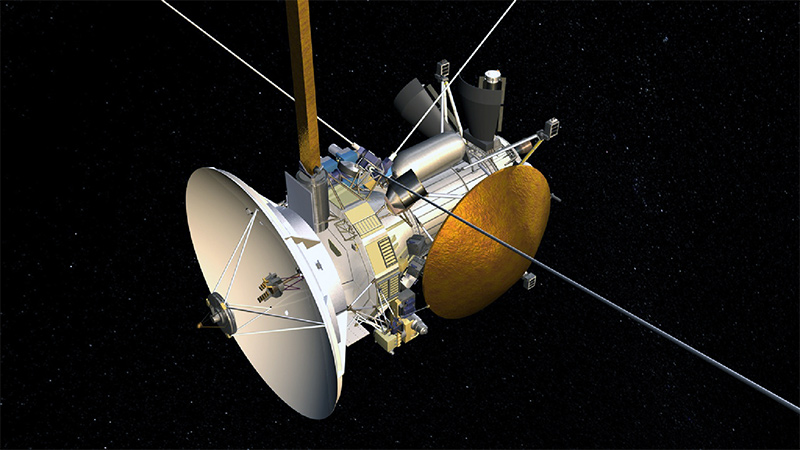Stay Up to Date
Submit your email address to receive the latest industry and Aerospace America news.
The Aerospace Power Systems Technical Committee focuses on the analysis, design, test or application of electric power systems or elements of electric power systems for aerospace use.
This year marked the 40th anniversary of the Voyager spacecraft launches. Voyager 1 launched Sept. 5, 1977, and Voyager 2 launched Aug. 20, 1977. Voyager 2 was the first (and only) spacecraft to visit all four gas giant planets (Jupiter, Saturn, Uranus and Neptune). Voyager 1 visited Jupiter and Saturn prior to the Voyager 2 flybys. The Voyager mission was enabled by nuclear power, specifically radioisotope thermoelectric generators. The original requirement for each of the three Voyager multihundred-watt RTGs was to provide 128 watts of electricity four years after launch for the originally planned Jupiter and Saturn flybys. They have more than exceeded that four-year requirement, enabling Voyager 2 to be the first spacecraft to fly by Uranus and Neptune and Voyager 1 to be the first spacecraft to fully enter interstellar space.
On Sept. 15, NASA’s Cassini spacecraft entered the atmosphere of Saturn after having spent almost 20 years in space and 13 years orbiting the ringed planet. The electrical power provided by three general-purpose heat source RTGs made Cassini’s mission possible.
The U.S. Department of Energy, on NASA’s behalf, continued to progress on the production of new plutonium-238 for use in radioisotope power systems. Sufficient targets were irradiated this year to conduct the next chemical separation demonstration. This separation campaign will emulate a full-production batch size, predicted to lead to about 300 grams of heat-source plutonium oxide. In addition, the DOE has transitioned to a constant rate production strategy to produce 10-15 fueled clads each year. This will reduce plutonium-238 production and NASA mission risks with a steady production and ready supply of heat sources for RPS-enabled missions. This constant rate production approach has the added benefit of reducing the cost to missions using an RPS by approximately 25 percent over the prior mission-fueling surge campaign model.
In July, NASA completed an RPS system study that provided guidance toward future technology investments in modular deep-space thermoelectric generators scaled to notionally produce 50-470 W of power. Based on continued mission need, NASA also initiated four technology development contracts for dynamic energy conversion research.
Preliminary testing of the Kilopower (a small fission reactor power system for space missions needing 1-10 kilowatts electric) nuclear technology demonstration assembly using an electrically heated depleted reactor core simulator was conducted at NASA’s Glenn Research Center in Ohio in January. The full Kilopower demonstration features a 4 kilowatt thermal uranium-molybdenum reactor core, sodium heat pipes for heat transfer and Stirling power convertors developed during the Advanced Stirling Radioisotope Generator program. A highly enriched uranium core was fabricated in July in three sections at the DOE’s Y-12 National Security Complex in Oak Ridge, Tennessee, for shipping to the DOE Nevada National Security Site’s National Criticality Experiment Research Center, where it will be integrated into the heat pipe. Power conversion assembly will be tested at Glenn. The demonstration is a partnership between NASA and the DOE National Nuclear Security Administration.
On Jan. 13, astronauts completed installation of lithium-ion batteries on two of the eight power channels on the International Space Station, replacing the old nickel-hydrogen battery technology on the S4 truss. The old batteries were sent to the ISS in early 2007 and were approaching the end of their design life.
Related Posts
Stay Up to Date
Submit your email address to receive the latest industry and Aerospace America news.




